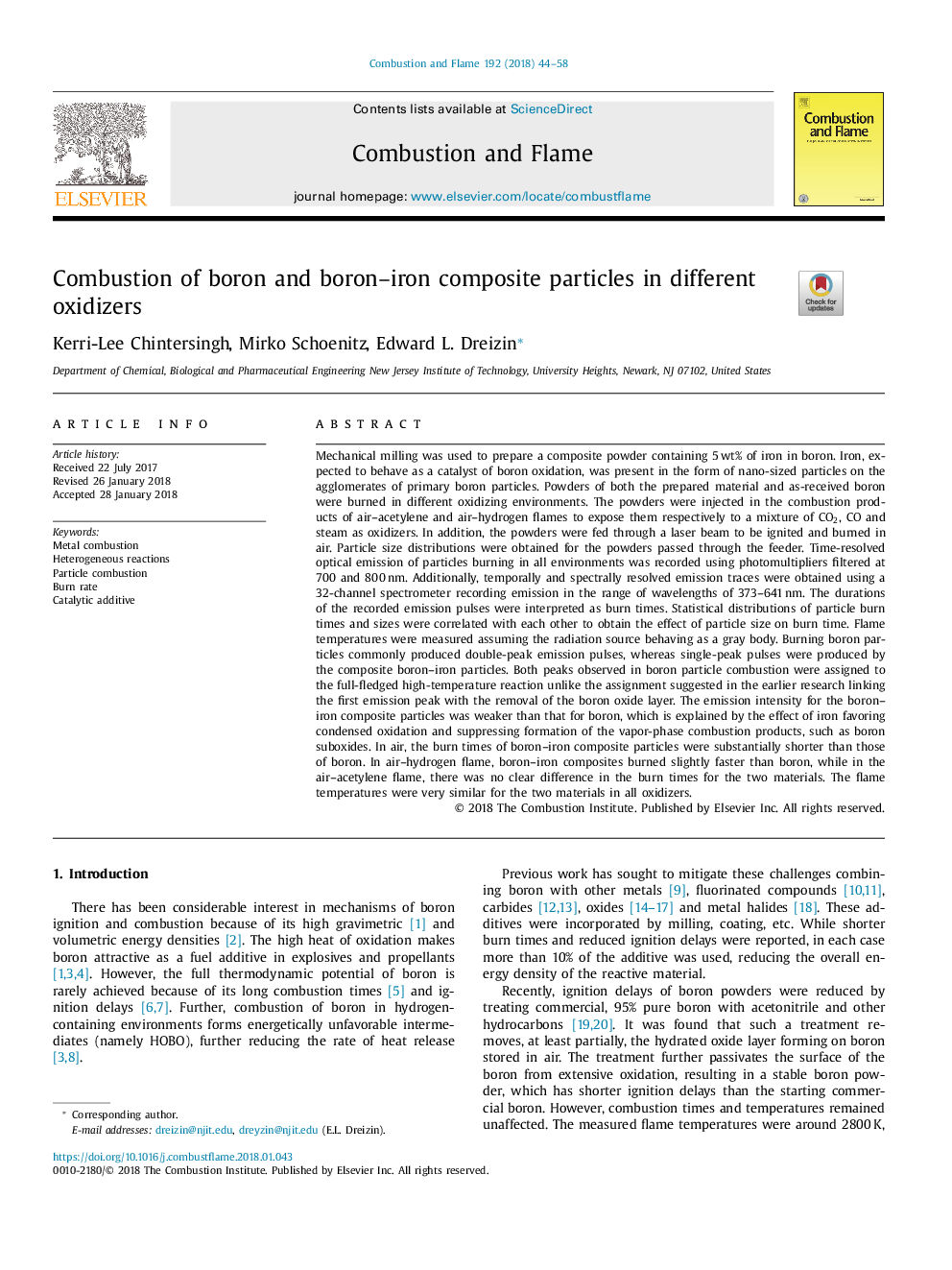| کد مقاله | کد نشریه | سال انتشار | مقاله انگلیسی | نسخه تمام متن |
|---|---|---|---|---|
| 6593641 | 1423545 | 2018 | 15 صفحه PDF | دانلود رایگان |
عنوان انگلیسی مقاله ISI
Combustion of boron and boron-iron composite particles in different oxidizers
ترجمه فارسی عنوان
احتراق ذرات کامپوزیت بور و آهن در اکسید کننده های مختلف
دانلود مقاله + سفارش ترجمه
دانلود مقاله ISI انگلیسی
رایگان برای ایرانیان
کلمات کلیدی
احتراق فلز واکنش های هتروژن، احتراق ذرات، میزان سوختگی، افزودنی کاتالیستی،
موضوعات مرتبط
مهندسی و علوم پایه
مهندسی شیمی
مهندسی شیمی (عمومی)
چکیده انگلیسی
Mechanical milling was used to prepare a composite powder containing 5â¯wt% of iron in boron. Iron, expected to behave as a catalyst of boron oxidation, was present in the form of nano-sized particles on the agglomerates of primary boron particles. Powders of both the prepared material and as-received boron were burned in different oxidizing environments. The powders were injected in the combustion products of air-acetylene and air-hydrogen flames to expose them respectively to a mixture of CO2, CO and steam as oxidizers. In addition, the powders were fed through a laser beam to be ignited and burned in air. Particle size distributions were obtained for the powders passed through the feeder. Time-resolved optical emission of particles burning in all environments was recorded using photomultipliers filtered at 700 and 800â¯nm. Additionally, temporally and spectrally resolved emission traces were obtained using a 32-channel spectrometer recording emission in the range of wavelengths of 373-641â¯nm. The durations of the recorded emission pulses were interpreted as burn times. Statistical distributions of particle burn times and sizes were correlated with each other to obtain the effect of particle size on burn time. Flame temperatures were measured assuming the radiation source behaving as a gray body. Burning boron particles commonly produced double-peak emission pulses, whereas single-peak pulses were produced by the composite boron-iron particles. Both peaks observed in boron particle combustion were assigned to the full-fledged high-temperature reaction unlike the assignment suggested in the earlier research linking the first emission peak with the removal of the boron oxide layer. The emission intensity for the boron-iron composite particles was weaker than that for boron, which is explained by the effect of iron favoring condensed oxidation and suppressing formation of the vapor-phase combustion products, such as boron suboxides. In air, the burn times of boron-iron composite particles were substantially shorter than those of boron. In air-hydrogen flame, boron-iron composites burned slightly faster than boron, while in the air-acetylene flame, there was no clear difference in the burn times for the two materials. The flame temperatures were very similar for the two materials in all oxidizers.
ناشر
Database: Elsevier - ScienceDirect (ساینس دایرکت)
Journal: Combustion and Flame - Volume 192, June 2018, Pages 44-58
Journal: Combustion and Flame - Volume 192, June 2018, Pages 44-58
نویسندگان
Kerri-Lee Chintersingh, Mirko Schoenitz, Edward L. Dreizin,
